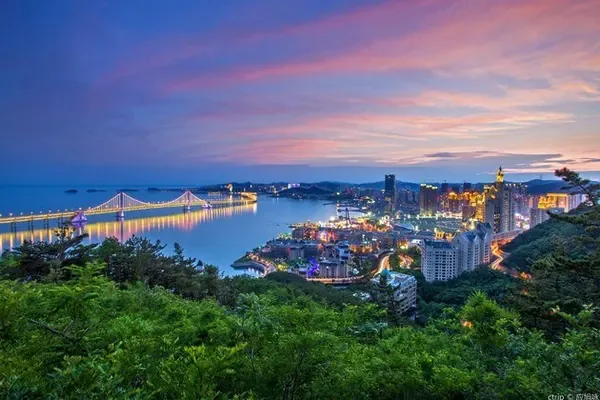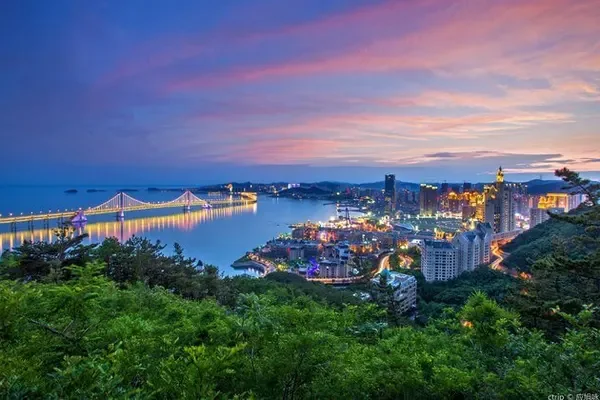On October 18, 2020, when we traveled to southern Xinjiang, we visited the Kuqa Palace. The picture shows the entrance of Kuqa Palace.
Kuqa Palace is located in Kuqa County, Xinjiang. It was built in 1759 by Emperor Qianlong of the Qing Dynasty who specially sent inland Han craftsmen to commend the achievements of the local Uyghur leader E Dui in helping to put down the size and size of the Hezhuo rebellion. The picture shows the courtyard of Kuqa Palace.
At the beginning of the 20th century, only some houses and city walls remained in the original "Kuqa Palace". In 2004, the Kuqa County Government invested 13 million yuan to rebuild the "Kucha Palace" on the original site according to the memories of Dawuti Maihesuti. The reconstructed "Kuqa Palace" covers an area of 40,000 square meters. It combines architectural features such as palaces in the Central Plains of China and Islamic styles, pavilions and towers in the Kuqa Palace. , Learn about the 190-year history and life of the 12-generation hereditary "Kuqa King". The picture shows the tourist panorama of Kuqa Palace.
The Wangfu Scenic Area is divided into three sightseeing areas: one is the exhibition area of the Kucha Museum with the Kucha culture as the main line. The picture shows the entrance of the exhibition area of the Kucha Museum.
The exhibition area of the Qiuci Museum is divided into six exhibition halls: Qiuci Spring and Autumn Period, Qiuci Buddha Rhyme, National Folklore, Production Tools, Folk Crafts, and Qiuci Coins. The cultural relics of the ancient Qiuci culture represented by the folk customs of the early society are the most representative. This is the booth of Kucha Foyun.
This is the booth of Kucha production tools
This is the booth of Kucha production tools
This is the booth of Kucha folk crafts
This is the booth of Kucha folklore
This is the Kucha coin booth
The exhibition area of the Kucha Museum fully demonstrates the openness, harmony, diversity and colorful culture of Kucha. The picture shows the garden in the exhibition area of the Kucha Museum.
The second part is the Wangfu exhibition area with the Kuqa king as the main line, which is divided into six parts: the last king exhibition hall, the Wangfu history museum, the prince's official residence, the Wangfu pavilion, the Wangfu exhibition hall, and the prince's home visit area. It fully demonstrates the glory and decline of the Kuqa royal family in the past 250 years. The picture shows the entrance of Kuqa Palace.
This is the mosque of the palace.
The dome and walls of the Wangfu Mosque are beautiful
This is the entrance to Wangfu Art Garden
The bathroom in Wangfu Art Garden is called "Easy Mansion"
This is the entrance to the prince's mansion
Residence of the Last Prince
Photographed at the official residence of the last prince
Photographed at the official residence of the last prince
Photographed at the official residence of the last prince
This is the entrance to the Palace History Museum
The full name of Kuqa Palace is "Kuqa Hereditary Huibu Prince's Mansion". The "Prince Huibu" is the "King of Uyghurs" who commands most of the Uyghurs in the southern part of the Tianshan Mountains. The photo was taken at the Kuqa Palace History Museum.
Here is the family tree of Prince Huibu of Kuqa, there are 12 people who inherit the throne. The photo was taken at the Kuqa Palace History Museum.
The Kuqa Palace was built in the eighth year of Daoguang in the Qing Dynasty, that is, in 1828 AD. During the Qianlong period, the first generation prince of Huibu Prince was named Mirza Edu, and he was a local official who commanded the three cities of Kuqa, Aksu, and Baicheng, which are important towns in southern Xinjiang. The photo was taken at the Kuqa Palace History Museum.
When the Qing government quelled the rebellion of Junggar and Hezhuo, Mirza Edu made outstanding contributions to maintaining the unity of the motherland. For this reason, Emperor Qianlong canonized him as "Yipin Zasak Darhan". By September 26, 1949, Xinjiang was peacefully liberated, and there were twelve generations of hereditary princes. The picture shows the oil painting that Emperor Qianlong canonized him as "Yipin Zasakdar Khan".
The picture shows the portrait of Yipin Zasak Darkhan.
This is the portrait of Mrs. Yipin Zasak Darkhan
Dawuti Maihesuti (1927-2014), the twelfth generation prince, was the last prince in China. The photo was taken in the Wang Exhibition Hall.
Dawuti Maihesuti is the nephew of the eleventh generation prince Maihefuzi. Since Maihefuzi had no son, Dawuti Maihesuti adopted his uncle from childhood and became the legal throne heir. When Dawuti Maihesuti was 14 years old, in order to consolidate the rule of southern Xinjiang, Sheng Shicai, a warlord in Xinjiang, was approved by the Xinjiang Supervisory Office to inherit the throne and became the twelfth generation king of Kuqa. From 1947 to 1949, Dawuti Maihesuti served as a senator of the Xinjiang Provincial Government. The picture shows the introduction about the last king.
After the liberation of Xinjiang, Dawuti Maihesuti served as the governor of the central banks of Kuche, Shaya, and Xinhe counties. From 1951 to 1958, due to a wrongful case, Dawuti Maihesuti was sent to Aksu Labor Reform. After serving his sentence, he served as the director of the agricultural machinery repair factory, the captain and technician of the water conservancy engineering team and the infrastructure engineering team, a government translator, and a translator for the cultural management office. From 1984 until his death, he served as the vice chairman of the CPPCC of Kuqa County and a representative of the National People's Congress.
Dawuti Maihesuti is not only a feudal prince, but also a loyal friend of our party, and a patriotic democrat loved by people of all ethnic groups. He resolutely supported the Communist Party, firmly defended the unity of the motherland, and unequivocally opposed ethnic divisions. He made outstanding contributions to promoting ethnic unity, social stability, and economic development. Dawuti Maihesuti has won many honorary titles such as "Model of National Unity", "CPPCC Clean and Good Cadre", "Excellent Committee Member of the CPPCC". The picture shows the family portrait of the last king.
The third part is the old city wall sightseeing area with the ancient city wall as the main line. It is divided into the city wall of the palace, the city wall of Seoul, the tomb of the last king, and the thousand-meter national gallery.
The third part is the old city wall sightseeing area with the ancient city wall as the main line. It is divided into the city wall of the palace, the city wall of Seoul, the tomb of the last king, and the thousand-meter national gallery.
Kuqa Palace has become a landmark project for the development of tourism resources in Kuqa County. And in November 2007 won the national 4A level tourist attractions. The photo was taken in Kuqa Palace.


